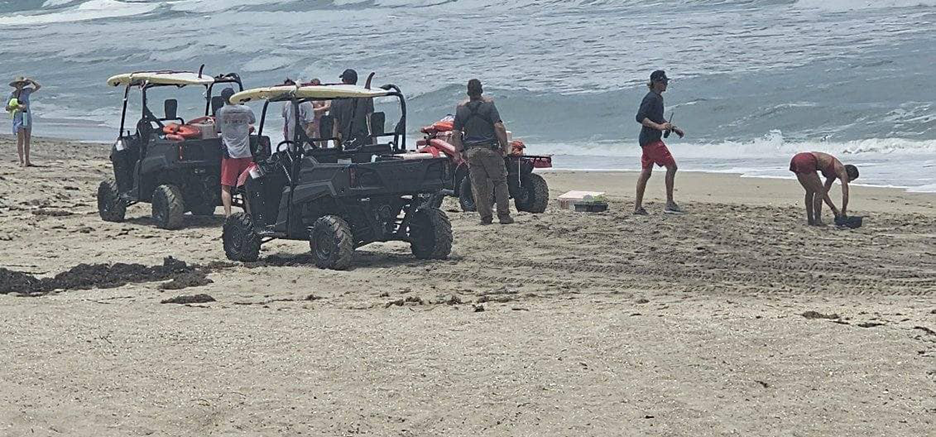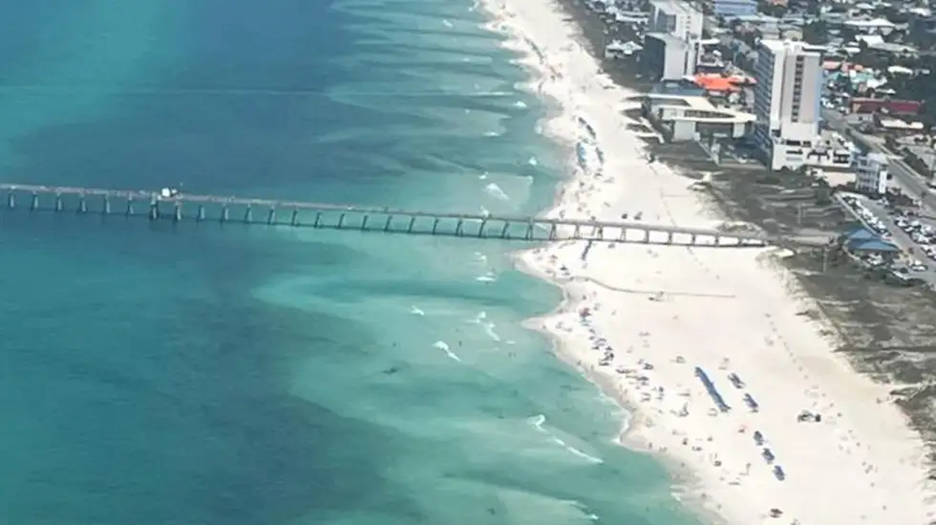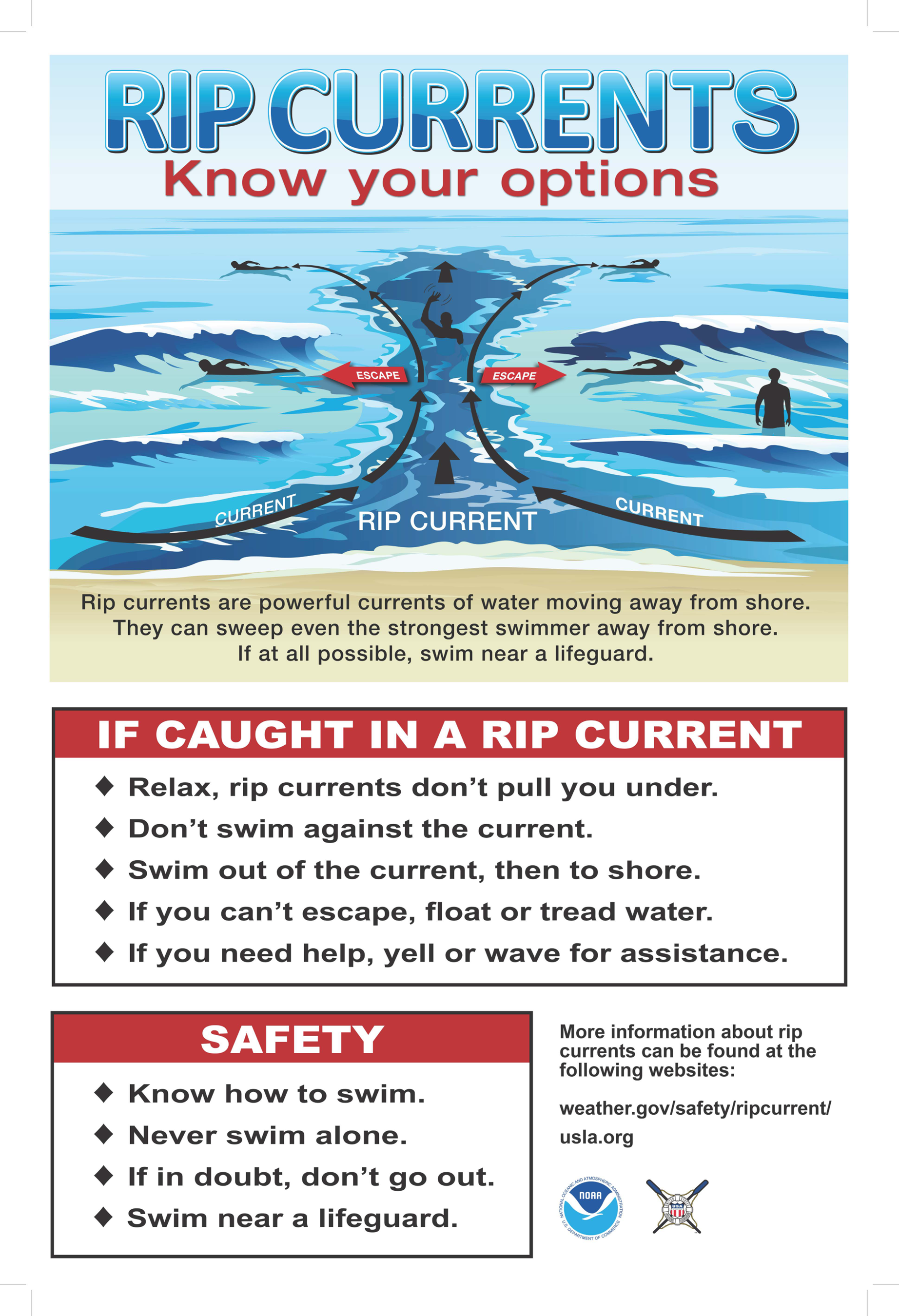In the serene beauty of coastal waters, a hidden danger lurks beneath the surface—rip currents. These powerful, fast-moving channels of water can catch even experienced swimmers off guard, leading to tragic consequences. Recent events in June 2024 have underscored the severity of this threat, with multiple deaths reported in New York and Florida due to rip currents. Understanding what rip currents are, how to recognize them, and crucially, how to stay safe from their grasp is essential knowledge for anyone venturing into the ocean.
Recent Tragedies: June 2024
June 2024 brought heart-wrenching news from popular coastal destinations in New York and Florida. Multiple deaths were reported as individuals, often unaware of the lurking rip currents, found themselves caught in the relentless pull of these underwater currents. Among the victims were vacationers and locals alike, highlighting the indiscriminate nature of rip currents—they pose a threat to anyone entering the water. Six people perished in rip currents in a 48-hour period in Florida. According to National Weather Service data, over 30 people died in rip currents in Florida in 2023. There have been 213 rip current deaths since 2002.

Facebook: Martin County Sheriff’s Office
Thursday June 20, in Hutchinson Island, about an hour north of West Palm Beach, Florida a tragedy unfolded. A couple was killed in Florida leaving behind six children. Brian Warter (51) and Erica Wishard (48) were swimming in red flag conditions when they were caught in a rip current. Lifeguards saw the scene unfold and responded immediately. Unfortunately the couple drowned and they were recovered by lifeguards 200 yards off shore. They were on vacation with their six children. The Martin County Sheriff’s Office and crisis counselors assisted and cared for the children while they were waiting for family to arrive.
Also on Thursday, an Oklahoma 19-year-old was caught in a rip current and drowned. This case highlights even when swimming near lifeguards, someone might not survive. He was pulled from the water and CPR was started. He was pronounced dead later at Ascension Hospital.
On Friday June 21, disaster struck again when three Birmingham fathers, Harold Denzel Hunter, 25, Jemonda Ray, 24, and Marius Richardson, 24, were swimming in Panama City. Single red flags were flying - indicating rip current and high hazard conditions. The swimmers became distressed. All three were rescued from the water and resuscitation efforts were initiated but all three were pronounced dead at area hospitals. Ray and Richardson were cousins who grew up like brothers and they were swimming with their friend Hunter. Their family stressed that rip “currents are serious” and asked “everybody to be careful in the water”.

Rip Currents seen all along Panama City Beach. Source: Bay County Sheriff’s Office
As of June 22, two teenagers were still missing in New York as of press time. They went into the water and were caught up in the currents and disappeared. The search continues while their devastated families look on.
These tragedies serve as a stark reminder of the importance of rip current awareness and education. Each incident underscores the need for comprehensive safety measures and public awareness campaigns to prevent future losses of life.
What are Rip Currents?
Rip currents, often misunderstood as "riptides" or "undertows," are strong, narrow flows of water that move swiftly away from the shore. They typically form when waves break near the shoreline, piling up water between the breaking waves and the beach. As this water returns to sea, it can form concentrated currents that flow seaward through a gap in the sandbars or other underwater structures.
These currents can reach speeds of up to 8 feet per second, faster than an Olympic swimmer, according to NOAA. Their power lies in their ability to swiftly carry swimmers away from the shore, sometimes beyond the swimmer's ability to return to safety.

Rip Current Infographic. Source: NOAA
Recognizing Rip Currents
Recognizing rip currents is the first step towards avoiding them. While they can be difficult to spot, especially for the untrained eye, there are several signs and visual cues to watch for:
- Difference in Water Color: Rip currents often appear darker or murkier than the surrounding water due to the sediment they carry seaward.
- Foam, Seaweed, or Debris Moving Seaward: As water is pulled away from the shore, it may carry foam, seaweed, or debris out to sea.
- Gaps in Breaking Waves: Often, rip currents occur in breaks between areas where waves are breaking. They may appear as calmer patches of water compared to adjacent areas with breaking waves.
- Unusual Wave Patterns: Sometimes, waves may be larger and choppier on either side of a rip current as they break against sandbars or other underwater obstructions.
- Feeling of Being Pulled: If you suddenly feel like you are being pulled away from the shore and are struggling to make progress towards the beach, you may be caught in a rip current.
How to Stay Safe from Rip Currents
Prevention and preparedness are key when it comes to staying safe from rip currents. Here are essential tips to keep in mind:
- Swim Where Lifeguards Are Present: Always choose beaches with lifeguards on duty. They are trained to identify and respond to rip currents swiftly.
- Obey Posted Signs and Flags: Pay attention to warning flags or signs posted at the beach. These indicate current water conditions and any potential hazards.
Beach flags are crucial for communicating water conditions and potential hazards to beachgoers. Here's a typical set of beach flags and their meanings:
Green Flag: Indicates low hazard conditions. It signals that it's generally safe to swim, but always exercise caution and follow basic water safety guidelines.
Yellow Flag: Indicates moderate hazard conditions. It alerts swimmers to potentially rough surf or dangerous currents. Swimmers should use caution and be aware of their surroundings.
Red Flag: Indicates high hazard conditions. It warns of strong currents, rough surf, or other dangerous conditions. Swimming may be restricted or strongly discouraged.
Double Red Flags: Indicates water is closed to the public. It signals extremely hazardous conditions where swimming is prohibited due to strong currents, high surf, or other dangerous factors.
Purple Flag: Indicates the presence of dangerous marine life, such as jellyfish or sharks, in the vicinity. Swimmers should be cautious and heed any additional instructions from lifeguards.
Checkered Flag: Indicates that surfing or other non-swimming activities are allowed, but swimming is prohibited. This flag is often used in areas where surfing zones are designated.
- Learn to Swim: Basic swimming skills are crucial for anyone entering the ocean. If you're not a strong swimmer, consider taking swimming lessons before venturing into deeper waters.
- Stay Calm if Caught in a Rip Current: If you find yourself caught in a rip current, do not panic. Stay calm and conserve your energy.
- Do Not Fight the Current: Instead of trying to swim directly back to shore against the current, swim parallel to the shore until you are out of the current's pull. Once free, swim at an angle back to shore.
- Float or Signal for Help if Exhausted: If you are unable to swim out of the current, float on your back to conserve energy and signal for help by waving your arms and calling for assistance.
- Use a Flotation Device: If available, use a flotation device such as a boogie board or surfboard to help you stay afloat until help arrives.
- Protect Children: Always keep a close eye on children near water. Ensure they understand the dangers of rip currents and never leave them unattended.
Education and Awareness
Educating the public about rip currents is crucial in preventing accidents and saving lives. Schools, community centers, and beach resorts should incorporate rip current safety into their educational programs. Informational posters, brochures, and videos can also be effective tools for raising awareness among beachgoers of all ages.
Additionally, local authorities and coastal management organizations play a vital role in monitoring water conditions and providing up-to-date information on rip currents. Weather forecasts and beach conditions should be easily accessible to residents and visitors alike, helping them make informed decisions before heading to the beach.
Conclusion
Rip currents are a powerful force of nature that demand respect and awareness from anyone who enjoys the ocean. The recent tragedies in June 2024 along the Atlantic Coast serve as a poignant reminder of their potential danger and the importance of education and preparedness. By understanding what rip currents are, how to recognize them, and following essential safety tips, we can reduce the risks associated with these invisible yet deadly currents. Whether you're a seasoned swimmer or a casual beachgoer, knowledge and caution are your best allies in enjoying the ocean safely.